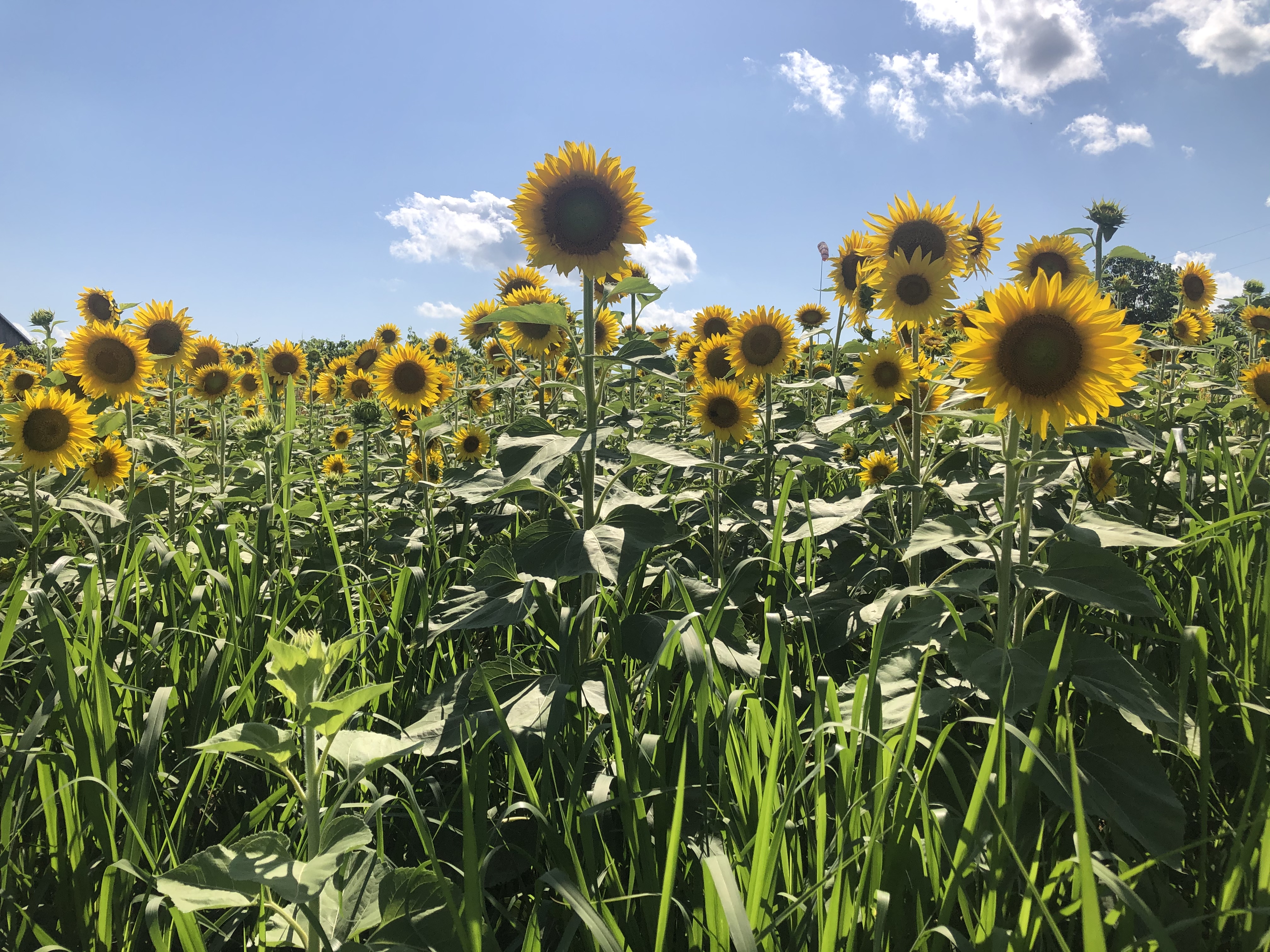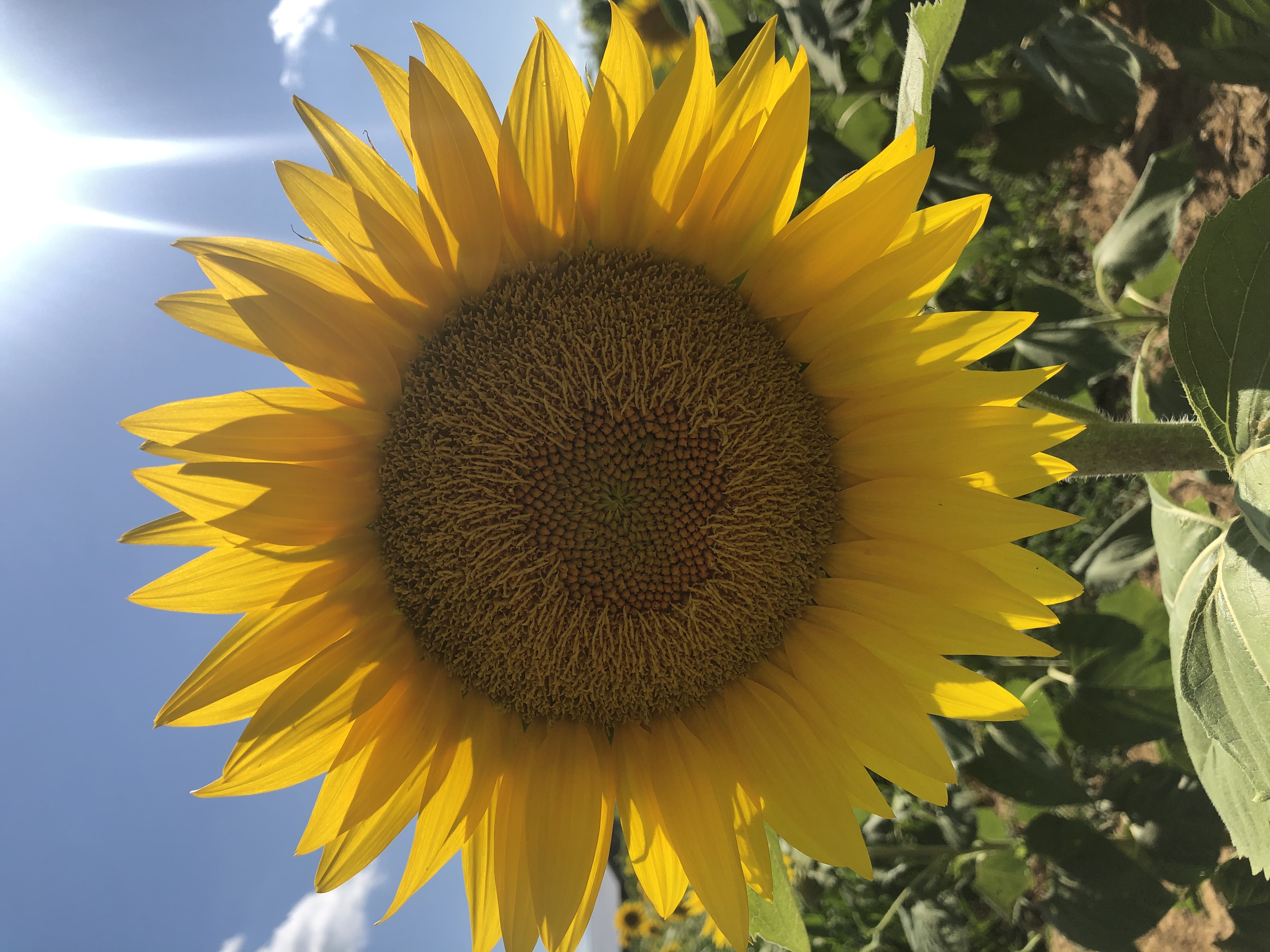For the first time at F&F we have a sunflower field. Guests can respectfully walk around the sunflowers and take pictures while social distancing of course. While sunflowers are beautiful and provide for the perfect photo opportunity, they are also quite fascinating flowers.

10 Fun Facts about Sunflowers
1.) They are native to the Americas.
Evidence suggests that sunflowers date back to 3000 BC in North America and originally were cultivated for medicine, oil, seed, and dye.

2.) Young sunflowers track the sun.
Sunflowers will face the sun and in their early stages will follow the sun from sunrise to sunset. Some evidence suggests that sunflowers have a circadian rhythm that promotes this behavior.
3.) Mature sunflowers face East.
As you may notice at F&F our sunflowers face away from the winery which indeed is East. When you walk out in the field you can capture the flowers and the winery all in one shot.
 4.) As the name suggests, sunflowers need a lot of sun.
4.) As the name suggests, sunflowers need a lot of sun.
Sunflowers grow best with 6 to 8 hours of sunlight a day, but more is even better. Flowers should also be planted far apart because they will compete and not grow to full potential if they are too close together.

5.) Sunflowers are actually composed of thousands of tiny flowers.
The fuzzy brown centers of sunflowers are actually individual tiny flowers. Even the petals on a sunflower are individual flowers.

6.) There are around 70 different species of sunflowers.
And they aren’t all yellow. In fact, sunflowers can even be red and purple!
7.) Sunflowers can range in height.
Typically, sunflowers are categorized as either giant or dwarf sunflowers. The tallest sunflower on record is 30ft tall while many species don’t get taller than 2ft.

8.) Sunflowers can self pollinate.
Sunflowers often attract bees which helps bring pollen to the stigma. However, in the case the flower receives pollen from bees, it can produce its own to reproduce.

9.) Sunflowers can absorb toxins.
In many different instances sunflowers have been planted to absorb toxins in the soil. They even have been planted to help absorb nuclear radiation.
 10.) The French word for sunflower is “tournesol,” which means “turns with the sun.”
10.) The French word for sunflower is “tournesol,” which means “turns with the sun.”
As we mentioned earlier, young sunflowers track the sun which is a trait called heliotropism.


